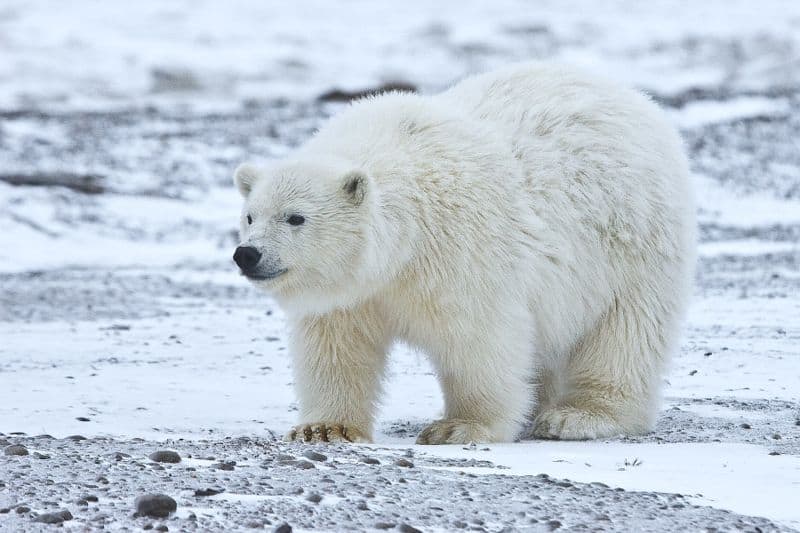The year was 1252, and King Henry III was excitedly watching as handlers unloaded his brand new polar bear, a gift from King Haakon IV of Norway.
It was the newest addition to the Tower of London’s menagerie, which already held three lions. Animals shuffled in from around the world for centuries after that, providing a steady flow of entertainment for the nobility.
Most of the animals were gifts from other noble families or diplomats, and it is to be assumed, a great majority of them were given as political gestures. This heavily guarded and strategically placed tower in London would host brown bears, jackals, eagles, hyenas, leopards, and even an African elephant.
Read on to discover how this menagerie came to hold a great pale bear.
A Succession of Elaborate Gifts
King Henry I is credited with the founding of the original menagerie that would evolve into the one held at the Tower of London. He kept his gifted and acquired animals at Woodstock Palace in Oxfordshire.
The animals living there were, in large part, gifts from the nobility around Europe. The animals remained in Oxfordshire through the successions of Kings Henry I, Stephen, Henry II, Richard I, and John.
It was King John who moved the animals to the Tower of London while increasing the population with cratefuls of new foreign animals.
The Lions of 1235
It wasn’t until 1235 when Emperor Frederick II gifted three lions (initially thought to have been leopards) to King Henry III in honor of the three lions on England’s coat of arms.
When the lions settled in, the menagerie became a noteworthy spectacle rather than just a small collection of animals. The new habitat required more attention, more food, and more money.
The Introduction of The White Bear
Some 15 years after the lions arrived, King Haakon IV of Norway gave King Henry III a white bear.
This white bear was presumedly a polar bear, though the term polar bear wasn’t yet in for the species. The possibility exists that the bear was an albino bear of some kind. Reports of its exceptional ability to swim and fish, however, suggests that it was probably a polar bear. A polar bear would have been a rare sight for people from England during the Middle Ages.
Even the most adventurous and wealthy people in Western Europe probably wouldn’t have ever seen a polar bear in 1252. This is because the their habitat is restricted to the land and ice circling the North Pole, including Greenland.

Even the most adventurous and wealthy people in Western Europe probably wouldn’t have ever seen a polar bear in 1252.
©Alan D. Wilson, CC BY-SA 3.0, via Wikimedia Commons – License
Polar bears are also found in Norway, although they’re limited to the Svalbard Archipelago which wasn’t discovered until 1596.
King Haakon IV, however, was an expansionist king who ushered in Norway’s medieval golden age, expanding the region’s influence in Europe and adding Iceland and Greenland into the country’s domain.
The indigenous Greenlandic Inuit people have lived on the island for four to five to thousand years. Erik the Red is presumed to be the first European to reach Greenland, arriving in the latter part of the 10th century. Folk lore suggests that Erik the Red, a Norwegian exile, stumbled upon the great land mass during a solo voyage.
The origin of King Henry III’s polar bear isn’t known, but it might have been come from Haakon IV’s new Greenlandic territory.
Swimming & Fishing in The Thames
The most famous story about the king’s bear is quite an interesting tale. In hindsight, it seems extremely dangerous as well.
According to the tale, the king’s handlers would bring the bear out on a chain, transporting it to the Thames River in London. The bear would swim and fish in the river, albeit on a chain with a good deal of slack.

The king’s polar bear would swim and fish in the Thames River, albeit on a chain with a good deal of slack.
©Vladimir Gjorgiev/Shutterstock.com
People would gather to watch the polar bear swim and fish around the river. This would have been the only polar bear that any of these people would have ever seen.
There were no photographs back then, and depictions of foreign animals were often totally inaccurate. So, the chance to see a polar bear swimming in the Thames River would have been a sight to behold.
Even in today’s time, odds are that a polar bear swimming in your hometown’s river would cause quite a stir as well!
What’s Up Next?
The photo featured at the top of this post is © iStock.com/Alexey_Seafarer
Sources
- History Hit, Available here: https://www.historyhit.com/lions-and-tigers-and-bears-the-tower-of-london-menagerie/
- Britannica, Available here: https://www.britannica.com/place/Svalbard
- HRP.org, Available here: https://www.hrp.org.uk/tower-of-london/history-and-stories/the-tower-of-london-menagerie/
Thank you for reading! Have some feedback for us? Contact the AZ Animals editorial team.






